Green Schemes: Sustainable Urbanism for Garfield Park 2007
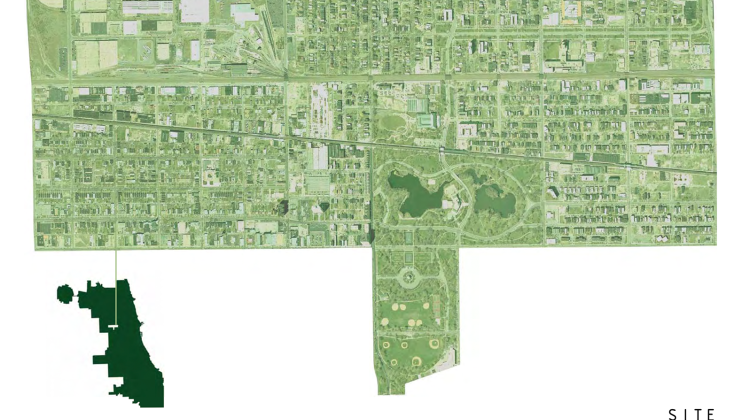
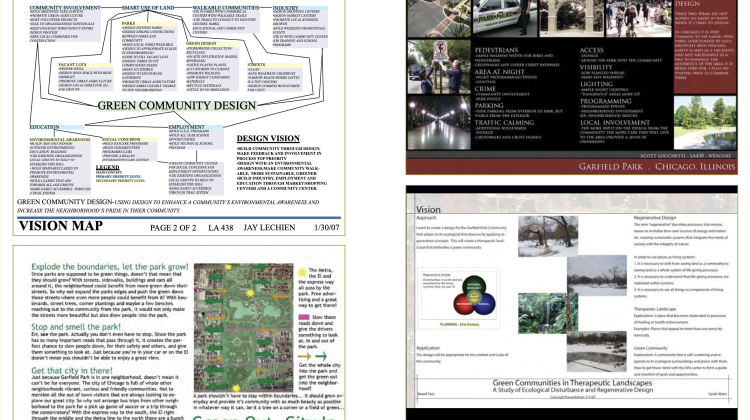
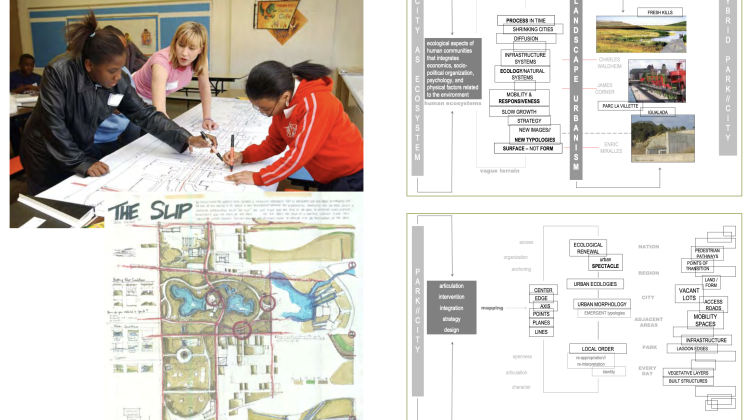
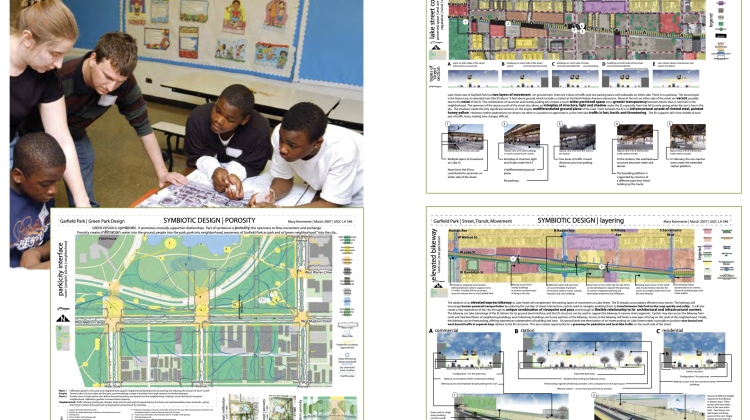
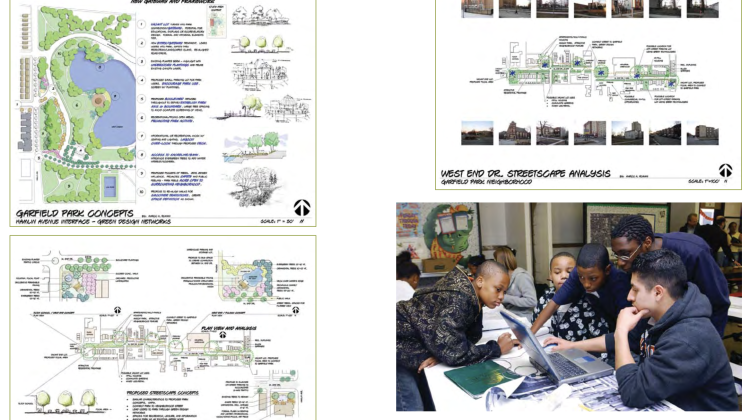
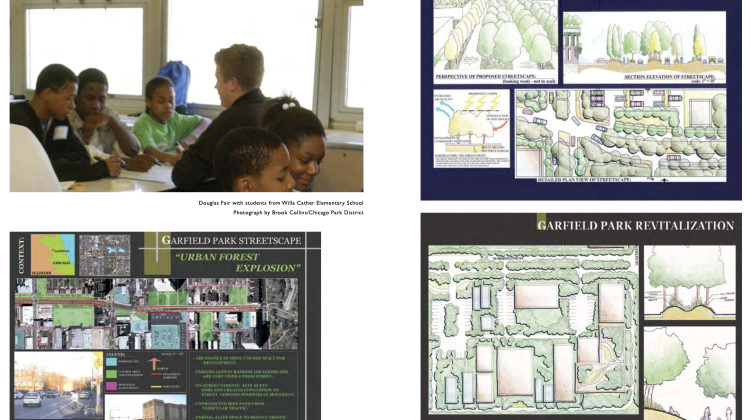
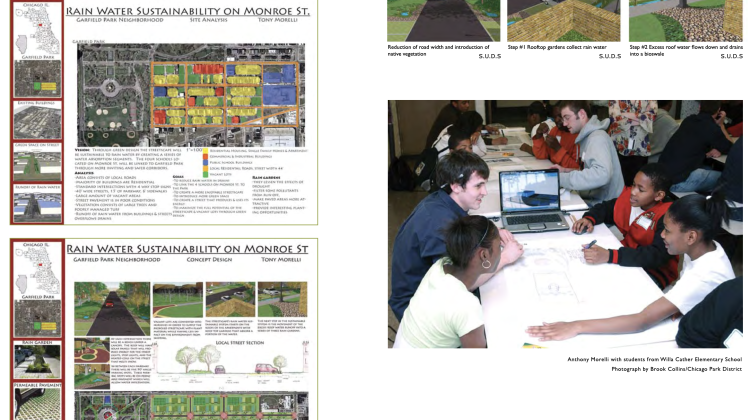
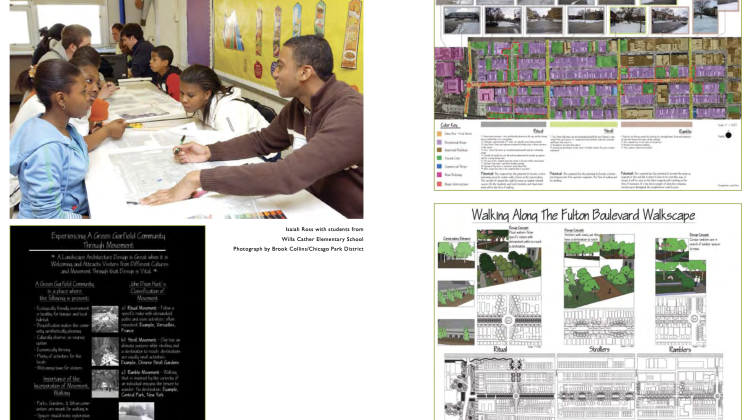
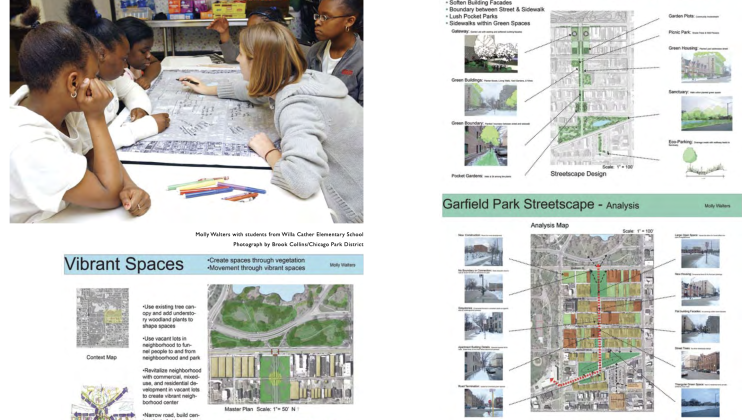
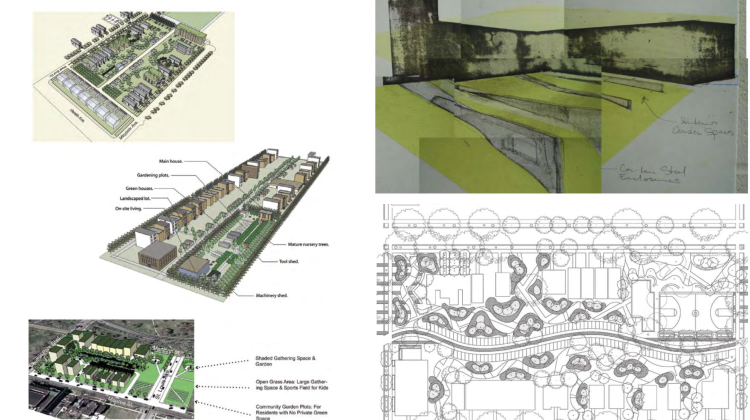
Garfield Park is one of Chicago’s most significant nineteenth-century parks, surrounded by one of Chicago’s most historically and culturally significant African-American neighborhoods. In the first years of the 21st Century under Mayor Richard M. Daley, the City of Chicago was committed to creating visible environmental programs and to improving environmental performance in both the downtown business district and in city neighborhoods. Garfield Park, a landmark open space and a key piece of Chicago’s social fabric, was a city design and planning priority.
At the invitation of the City of Chicago Department of Environment, the University of Illinois at Chicago (UIC) through its City Design Center, (CDC) organized a series of Green Neighborhood Design Studios during the 2006- 2007 academic year to address the challenge of sustainable urbanism. Three University of Illinois academic departments collaborated to offer Green Studios: the Urban Planning and Policy Program; the School of Architecture at UIC; and the Department of Landscape Architecture at the University of Illinois at Urbana-Champaign (UIUC). Faculty from each of these departments instructed a total of five studios between September 2006 and May 2007: two each in urban planning (Professors Brent Ryan and Dave Walker) and landscape architecture (Professors Doug Johnston and Jim Wescoat), and one in architecture (Professor Penelope Dean).
All five studios examined a common area of the Garfield Park with a mix of industrial and business districts, older residential housing stock, and the park. The City’s particular priorities for this area included formulating recommendations for “green design” policies; visualizing concepts for green buildings and green public ways; enhancing the environmental, financial and social benefits of green neighborhoods; and developing best practices for green neighborhood design. Students enrolled in the studios were asked to prepare “green neighborhood visions” at the scale of building, street, neighborhood, and community. The resulting proposals, published in Green Schemes, demonstrate how green neighborhood design can include interrelated urban elements like transportation, building technology, urban agriculture, manufacturing, and green public ways. All of the design concepts generated by the studios showed a particular sensitivity to the existing neighborhood context and to community priorities expressed by residents. Overall, Green Schemes provided a number of inspired ideas for residents and public officials alike to become better green stewards of the urban landscape that we all inhabit.


